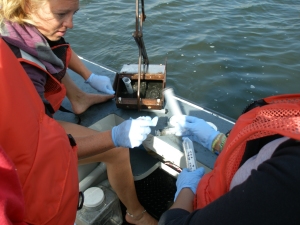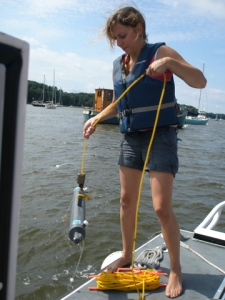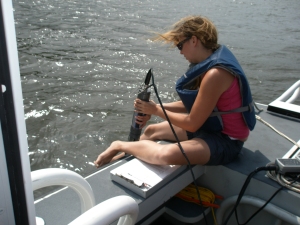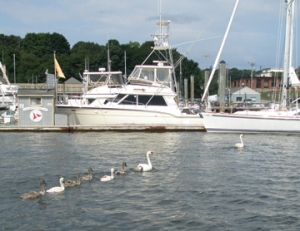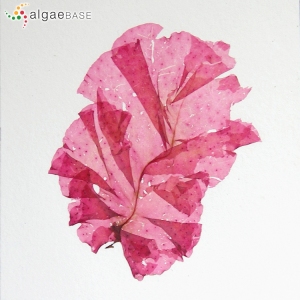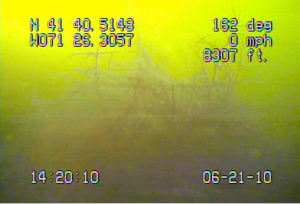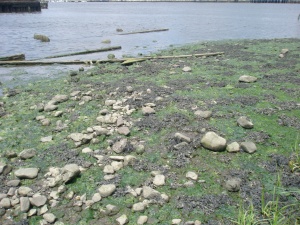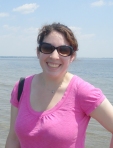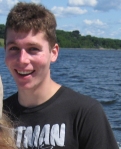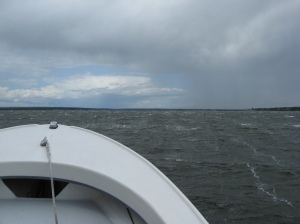NBEP, Brown University and Save the Bay conducted a water quality survey on Thursday, August 19th, and results were much better than expected! The west passage (from the Warwick Neck south to the tip of Jamestown) was well mixed throughout the water column. The only area our boat saw dissolved oxygen levels below 3.0mg/L (milligrams per liter) was in Greenwich Bay, and even then, only at six of the 14 stations. NBEP surveys all stations in Greenwich Bay, West Passage and meets up with the Brown boat at the southern station in Upper Bay. |
We not longer survey the Mount Hope Bay or most of the East Passage because low dissolved oxygen levels are rarely found and it is logistically very difficult to cover that area with our three boats. At the end of the summer all data will be posted to the Brown University's Insomniacs website.
Again we found Greenwich Bay to have patches of reddish colored water, and the Sea-bird was giving fairly high flourometry readings (Chlorophyll levels in the water measured in (μg/l, or micrograms per liter) , so we took some water samples with our fine mesh net to analyze back in the lab. Professor David Borkman was kind enough to come help identify the species, which he determined to be Procrocentrum micans, Dinophysis accuminata (not pictured below), and Sanguinium akashiwo.
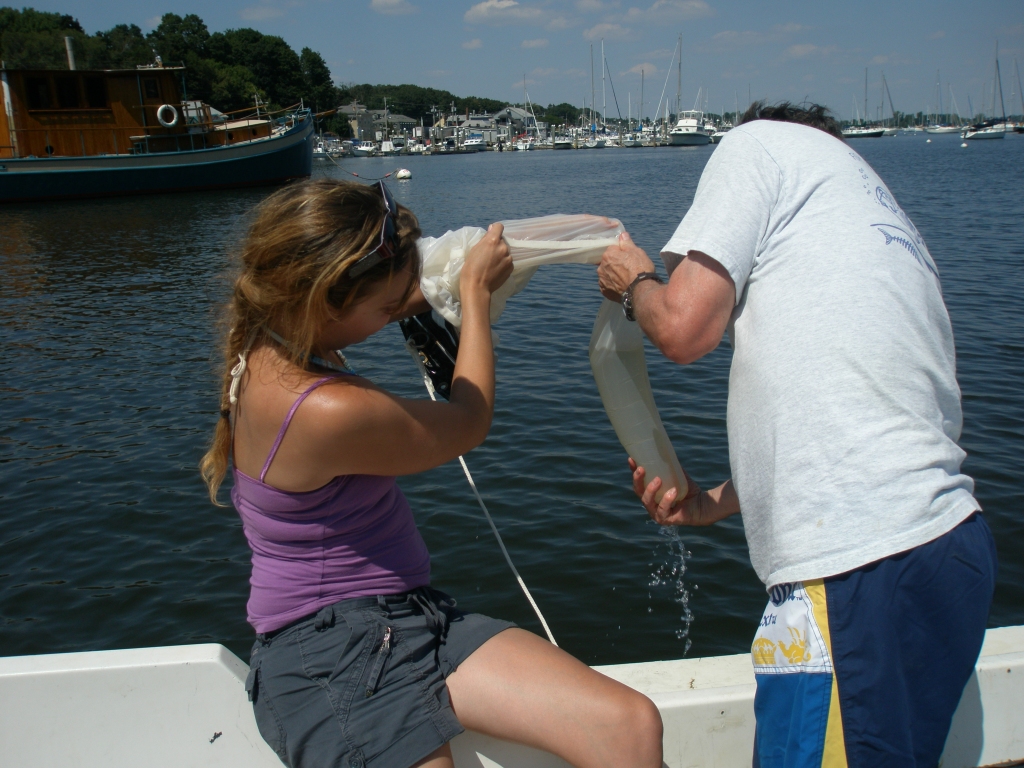 Lesley and Chris collecting a water sample in Greenwich Cove. |
Most folks know about eelgrass (Zostera marina), and it's benefits to estuarine critters, however, there is another species of seagrass living in Narragansett Bay. While surveying Apponoug Cove in Greenwich Bay, we came across large, floating patches of widgeon grass (Ruppia maritima). There are several species of seagrass found along the Atlantic Coast, however, many species such as turtle grass (Thalassia testudenum), and manatee grass (Syringodium filiforme) are found only in the warmer waters, south of the Chesapeake Bay.
 |
| Underwater Video image of a healthy bed of Ruppia maratima at the mouth of Apponaug Cove. |
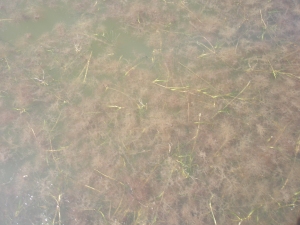 |
| Patch of R. maratima floating with seaweeds Polysiphonia and Ceramium in Apponaug Cove. |
Seagrass is an important estuarine habitat for many reasons. Seagrass beds provide shelter, and feeding grounds for juvenile fish, crabs, shellfish, and birds, and act as a biological filters and erosion control by trapping sediments in its interconnected root structure known as rhizomes. Historically, the southwestern part of Greenwich Bay (Greenwich Cove) was known as Scallop Town because of its healthy beds of shellfish living in and among the seagrass. Unfortunately, seagrass beds have been in decline over the years and efforts to re-vegetate affected areas has had mixed results. Much research has gone into understanding the decline of seagrass beds throughout the Atlantic Coast and globally. Some of the major factors in the decline of seagrass has been attributed to the "wasting disease" of the 1930s, dredging, oil leakage from outboard motorboats, hurricanes, and increased macroalgae due to eutrophication (excessive nutrients in waterways). Boat props can also damage seagrass beds, so it is important to be aware of the area you are boating in, and avoid traveling through an area when you see plant life in your wake.











